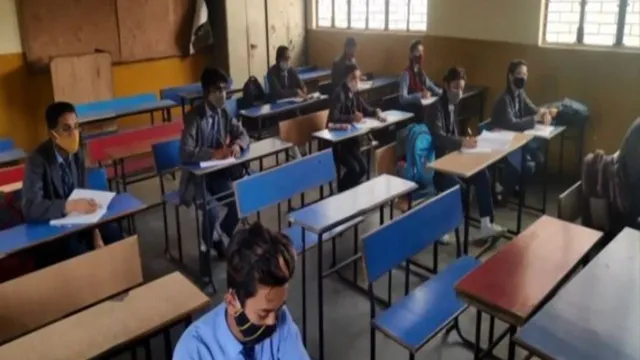- By Ritesh Kumar
- Mon, 26 Aug 2024 02:08 PM (IST)
- Source:JND
The National Council of Educational Research and Training (NCERT) has proposed a new evaluation model for Class 12 board exams that would incorporate marks from Classes 9 to 11, along with a greater focus on vocational and skill-based training. This proposal, detailed in a report titled "Establishing Equivalence across Education Boards," suggests using cumulative performance metrics: 15 per cent from Class 9, 20 per cent from Class 10, and 25 per cent from Class 11, as per the media reports.
NCERT's proposal suggests that a student's performance from Class 9 onward will contribute to their final Class 12 board results. The report, submitted by PARAKH, a regulatory center established by NCERT, to the Ministry of Education in July 2024, advocates for a standardised assessment approach across all educational boards in India.
After consulting with 32 boards over the past year, the report recommends making vocational and skill-based subjects mandatory, such as Data Management, Coding, Application Development, Artificial Intelligence, Music, Arts, and Crafts, to promote holistic learning, in line with the National Education Policy 2020 (NEP 2020).
Moreover, the report stresses the importance of assessing teachers' performance and improving school infrastructure, including the availability of potable water, well-equipped libraries, and sufficient sports facilities, to create a conducive learning environment.
Proposed Weightage System for Class 12 Results
The new assessment system proposed by NCERT introduces a weighted approach to calculating Class 12 results. Marks from previous classes will be assigned specific weightage: 15 per cent from Class 9, 20 per cent from Class 10, and 25 per cent from Class 11, with the remaining 40 per cent based on Class 12 performance.
The evaluation for Class 12 will be divided into formative and summative assessments.
- Formative Assessments will include self-reflection exercises, student portfolios, teacher evaluations, project execution, and group discussions.
- Summative Assessments will consist of traditional term-end examinations.
Distribution of Scores Across Classes
The report outlines the distribution of scores for different classes:
- Class 9: 70 per cent from formative assessments and 30 per cent from summative assessments.
- Class 10: A balanced 50-50 split between formative and summative assessments.
- Class 11: 40 per cent from formative assessments and 60 per cent from summative assessments.
- Class 12: 30 per cent from formative assessments and 70 per cent from summative assessments.
Introduction Of A Credit-Based Learning System
The new assessment model for Classes 9 to 12 will implement a credit-based system, assigning weightage in the form of credits for each content unit. Students in Classes 9 and 10 are required to earn 32 subject-specific credits out of a possible 40, while those in Classes 11 and 12 must accumulate 36 subject-specific credits out of 44. The remaining credits can be obtained through online courses such as MOOCs or through research and community-based projects.

